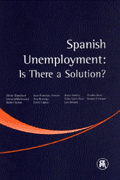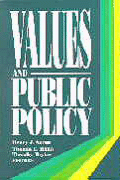Studies in this week’s Hutchins Roundup find that the COVID-19 pandemic will have long-lasting negative effects on unemployment, longer commutes disproportionately affect women, and more.
Want to receive the Hutchins Roundup as an email? Sign up here to get it in your inbox every Thursday.
COVID pandemic will have long-lasting negative effects on the economy
Victoria Gregory and Guido Menzio of New York University and David Wiczer of Stony Brook University find that even a relatively short three-month lockdown will have long-lasting negative effects on unemployment. They model the lockdown as a temporary decline in labor productivity during which employers lay off the least productive workers. Using data from the Longitudinal Employer and Household Dynamics and the Survey of Income and Program Participation, they find that “fickle” workers—those with low productivity, long unemployment spells, and frequent job turnover—are disproportionately more likely to be permanently terminated; they also work in industries most affected by the lockdown. These workers are likely to be unemployed for years, even after the economy returns to normal, slowing down the recovery. The authors warn that their model may be overly optimistic because the pandemic is likely to have some effects on production beyond three-months and because company bankruptcies will lead to unemployment even among highly productivity workers.
Long commutes hinder labor force participation for women
In the United States, commuting times have increased significantly—from an average of 45 minutes per day in 1980 to 54 minutes in 2016. Using microdata from the U.S. Census, Lídia Farré, Jordi Jofre-Monseny, and Juan Torrecillas from the University of Barcelona estimate that a 10-minute increase in commuting time decreases the probability that a married woman participates in the labor market by 4.6 percentage points. Women with children and immigrant women originally from countries with more gendered social norms are the most responsive to changes in commuting times, they find. In contrast, the authors find no such effect for men and unmarried women. Moreover, there were no important differences in the response of family members with different levels of education, suggesting that productivity gaps are not likely to explain the gender asymmetry in their results. The authors conclude that the unequal distribution of family responsibilities and the presence of social norms about the role of men and women in society explain why commuting costs affect men and women differently and perpetuate gender inequality in the labor market.
Almost half of pandemic-induced layoffs will result in permanent job loss
Even as much of the economy is shuttered, some firms are expanding in response to pandemic-induced demand shifts. Jose Maria Barrero from the Autonomous Technological Institute of Mexico, Steven J. Davis from the University of Chicago, and Nicholas Bloom from Stanford find that the COVID-19 shock caused three new hires in the near term for every 10 layoffs. Drawing on firm-level employment and sales forecasts at a one-year horizon in the Survey of Business Uncertainty, they construct forward-looking measures of the reallocation of jobs and sales. Comparing changes to firms’ expectations before and after the onset of the pandemic, they find that the expected reallocation rate— the volume of cross-firm reallocation in excess of the amount needed to accommodate the aggregate net change—is 2.4 times larger than the pre-COVID average for jobs. Moreover, it is 3.9 times larger than the pre-COVID average for sales. The authors say that even if the crisis is resolved quickly, many pandemic-induced shifts in consumer demand and business will linger. Therefore, they conclude that the reallocation of labor is likely to persist and estimate that 42% of recent pandemic-induced layoffs will result in permanent job loss.
Chart of the week: Today’s unemployment in historical context
Quote of the week:
“Unprecedented times require unprecedented actions. Both the federal government and the Federal Reserve took action quickly. These relief efforts can be viewed as building a bridge to get households and businesses from the generally good economy we had in February to the other side of the pandemic shutdown period. The shutdown period has lengthened over time, driven by the course of the disease. So the bridge has to be longer than first assumed, and it also has to be wider, as more households and firms are in need of some kind of help,” says Loretta J. Mester, President of the Cleveland Federal Reserve Bank.
“Fiscal policymakers have taken significant actions, including making grants to individuals, certain businesses hit hardest by the pandemic, and states and municipalities. They have expanded unemployment benefits and have funded the Paycheck Protection Program, which provides small businesses with loans that turn into grants if they maintain their payrolls. As the magnitude of the need has come into better focus, the federal government has increased its level of support. Although the amount of support has been sizable, so is the depth of the economic downturn. In my view, further direct fiscal support will be needed if we are to avoid the longer-lasting damage to the economy that would happen if job losses become persistent and a large share of otherwise viable businesses fail.”












Commentary
Hutchins Roundup: Lockdowns, commutes, and more
May 14, 2020